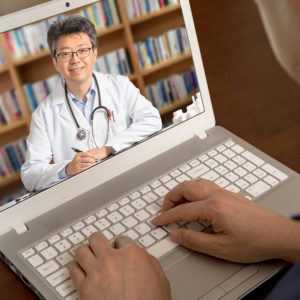The COVID-19 pandemic has tested every facet of our health infrastructure as the nation deals with unprecedented isolation and stress. With the darkest days behind us (I hope), medical professionals are now examining public health innovations forced by the crisis to adopt those techniques to serve those most in need.
One such innovation is the use of telehealth to address deficiencies in treating adult ADHD. Such endeavors have demonstrated firsthand that a well-designed virtual care platform has extraordinary potential to ensure accessible, high-quality care for all patients.
ADHD is a common neuropsychiatric disorder that impairs the ability to pay attention by reducing the brain’s normal capacity to inhibit distracting mental and physical impulses, thus adversely affecting completing tasks and attaining goals. Those who think of ADHD as a relatively mild disorder are surprised to learn that it shortens lifespans more than smoking or obesity and can lead to career and relationship failure and even suicide.
There are currently 10.6 million to 13.2 million adults with ADHD in the United States — but the number receiving treatment is far less. One study found that 48 percent of adults who meet the criteria for ADHD had not mentioned their symptoms to a healthcare provider. Most who do obtain professional medical help will be treated by a primary care physician or general nurse rather than a specialist trained to diagnose and treat psychiatric disorders.
Unfortunately, the quality of psychiatric treatment received from primary care professionals is usually inadequate. In one study, only 12.8 percent of psychiatric services from general healthcare providers were rated even “minimally adequate.” Furthermore, fewer than 30,000 qualified psychiatrists are available to treat ADHD patients in the United States, making access to quality care a formidable challenge.
The problem is twofold: stigma makes patients hesitant to talk to their doctors about ADHD, and if they do so, they encounter a severe shortage of professionals who can provide adequate, let alone high-quality, care.
Enter telehealth. The technology has been available for years, but it was rarely used before COVID. In 2020, the Biden administration declared a public health emergency allowing the Department of Health and Human Services to relax restrictions on the use of telehealth. While this remains in effect, authorized providers can conduct medical evaluations and prescribe treatment while patients remain in the safety of their homes.
That’s a big deal for the ADHD community. Pre-pandemic, stigma and the shortage of specialists already presented intimidating barriers to care. COVID added another forbidding obstacle by creating justified fear about in-person visits to any clinic or hospital for any reason.
Clinical evidence resoundingly demonstrates the most effective single treatment for ADHD is psycho-stimulant medication. The public health emergency allows certified medical providers to prescribe these medications without the burden and danger of in-person visits.
The ability to virtually access high-quality care is a game-changer that gives more Americans struggling with ADHD the help they need. Telehealth options ease what has been egregiously tricky access to quality treatment and will significantly decrease the alarming number of Americans going without potentially lifesaving ADHD treatment. Online health care platforms enable flexible care for underserved groups and under-treated diagnoses in comfort and safety.
The realization of the benefits of telehealth is perhaps the only silver lining of the dark cloud of COVID, and it would be an additional tragedy if those benefits were lost because the public health emergency was ended. Such an action would traumatize our healthcare system yet again, needlessly sidelining the patients most need our help.

